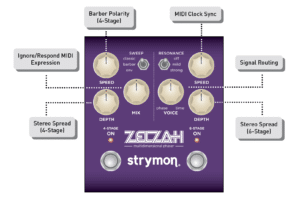
Secondary Functions: Zelzah Multidimensional Phaser
Here at Strymon, we work hard to deliver inspiring tones while keeping every pedal easy to use and pedalboard friendly. We also pack our pedals
Free US Shipping On Orders Over $49
Easy 30-Day Returns
Financing Available Through ![]()
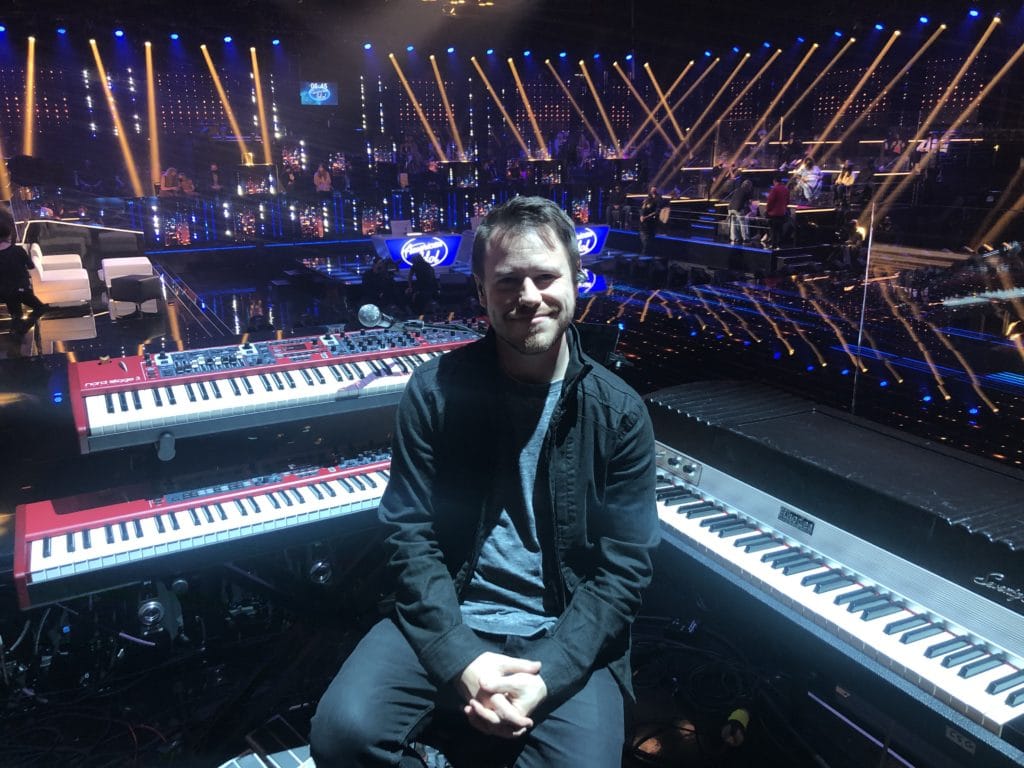
Recently all of us at Strymon were very excited to have the opportunity to share the video below of Peter Dyer playing three of his own vintage keyboards through our new Zelzah Multidimensional Phaser. Those three keyboards—the Rhodes Electric Piano, the Wurlitzer Electronic Piano, and the Hohner Clavinet—have shaped so much of the music we’ve heard throughout our lives. Check out the video and then read on to find out a little background about the iconic keyboards, and see what Peter has to say about them. Like any vintage piece, they each have a story to tell.
In the 1940s, Harold Rhodes was a member of the Army Air Corps teaching piano as a form of therapy to wounded soldiers recovering in the hospital. During this time he created miniature piano instruments designed to be played in bed. He couldn’t have known then what that would lead to.
In 1959, Rhodes began working with Leo Fender to produce keyboard instruments, and soon after CBS’s purchase of Fender in 1965, the first Fender Rhodes Electric Pianos were released. These keyboards are electromechanical instruments, designed to feel like an acoustic piano, but with a quite different sound generated by a hammer striking a small metal tine connected to a larger metal tone bar. That’s the mechanical part. The electro part is that the tine vibrates next to a magnetic pickup, creating an electrical signal that can then be amplified.
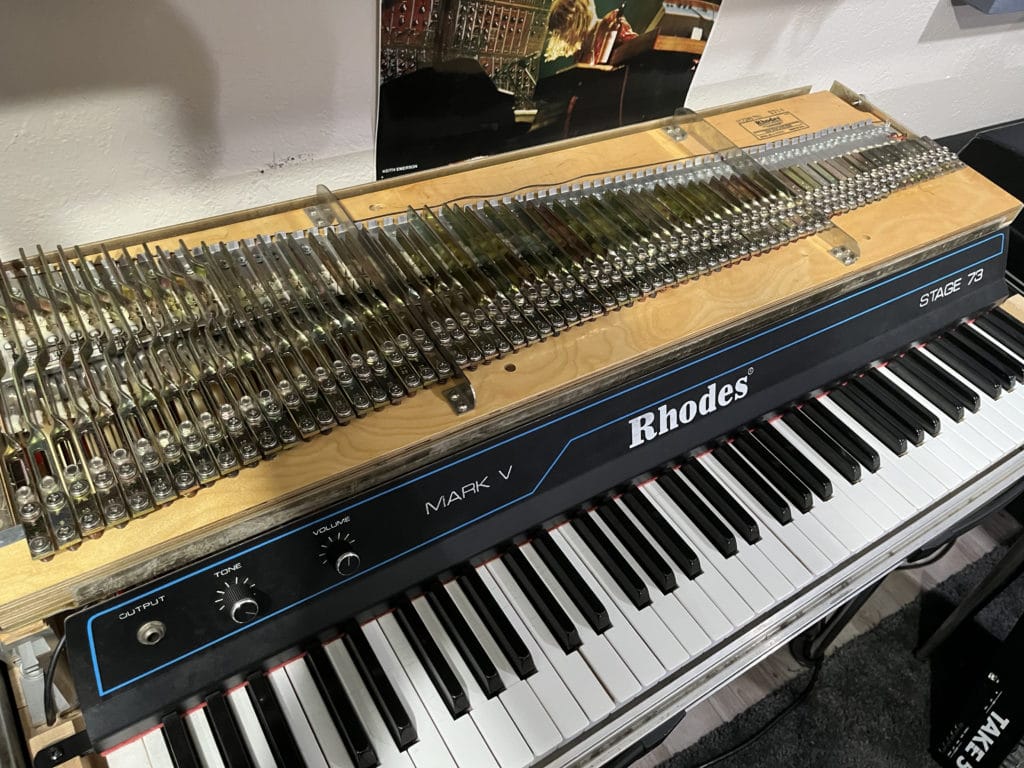
The Rhodes piano sound has made its way onto countless recordings through the years in a variety of genres. You can probably hear Billy Preston’s unforgettable Rhodes solo in your head right now from the Beatles’ “Get Back.” Or Ray Manzarek’s keyboard parts on The Doors’ “Riders on the Storm.” And if you are a keyboard player, have you ever challenged yourself with learning “Minute by Minute” by the Doobie Brothers? Here’s what Peter has to say about his own Rhodes Mark V Stage 73 Electric Piano:
I bought that Rhodes in 2004 for $200, sight unseen on eBay (no photo), pickup only. I was so Rhodes-hungry that I drove from Portland all the way out to Boise, Idaho and back in one day (12-hour turnaround) to get it. I’ve bought and sold two other Rhodes in my lifetime, but I still have and adore this one. It’s played a lot of gigs and taken a beating, including dropping five feet to the asphalt from a truck bed, and falling down my first apartment’s staircase at 2am.
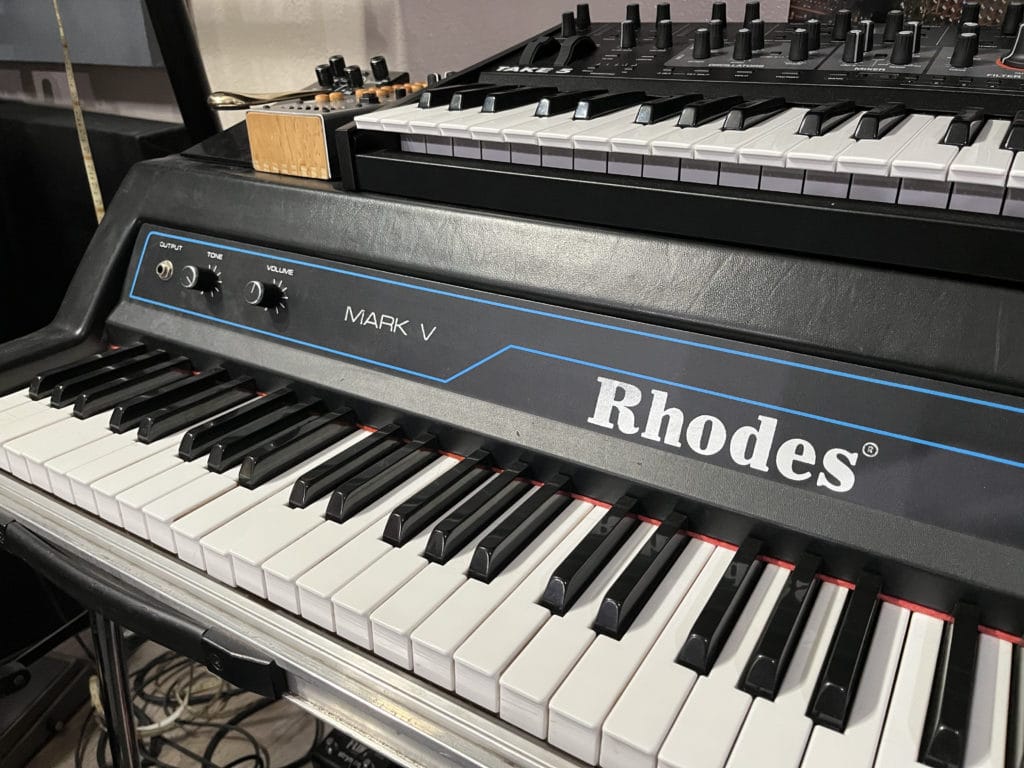
A friend kindly made me a sustain pedal, as the vintage ones are spendy, and it’s just a pivot point and a rod. I added a back-check mod to the keyboard which helped reduce the key ricochets that can happen when you smack a key. It’s a tedious mod (installing and customizing a catch on each key), but it made the action more even.
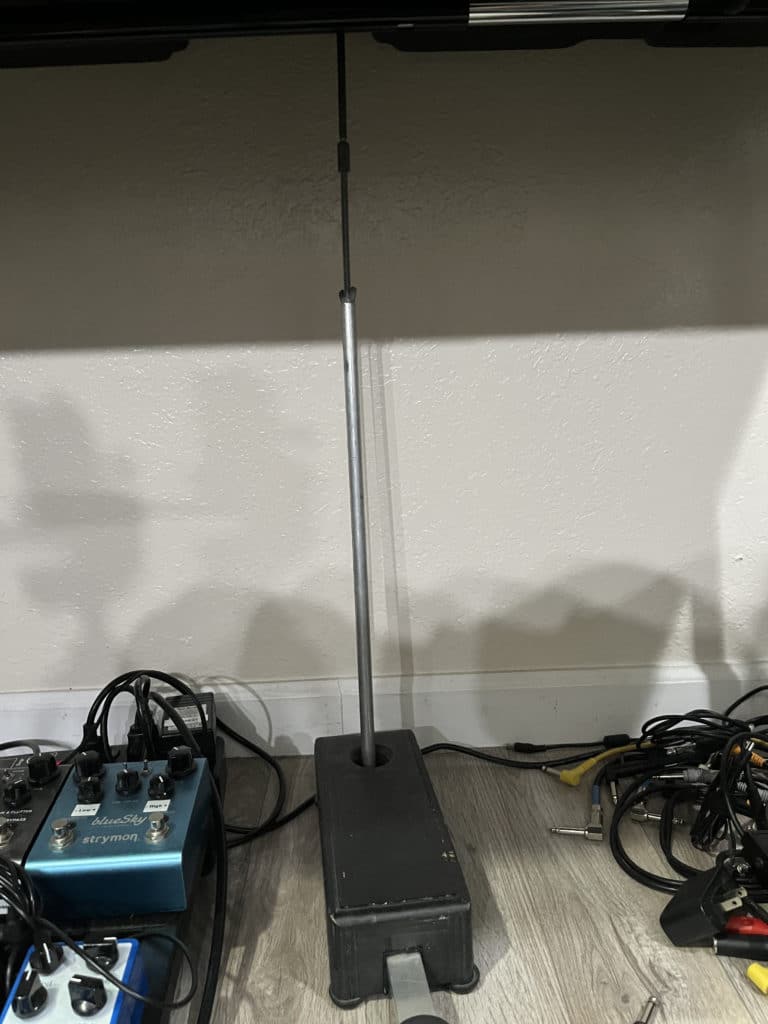
Rhodes pianos take to pedals exceptionally well. This particular model Rhodes has a passive pickup design that benefits from some additional gain, so I have been running it into Iridium for gain, and also have been using Compadre for a more even response.
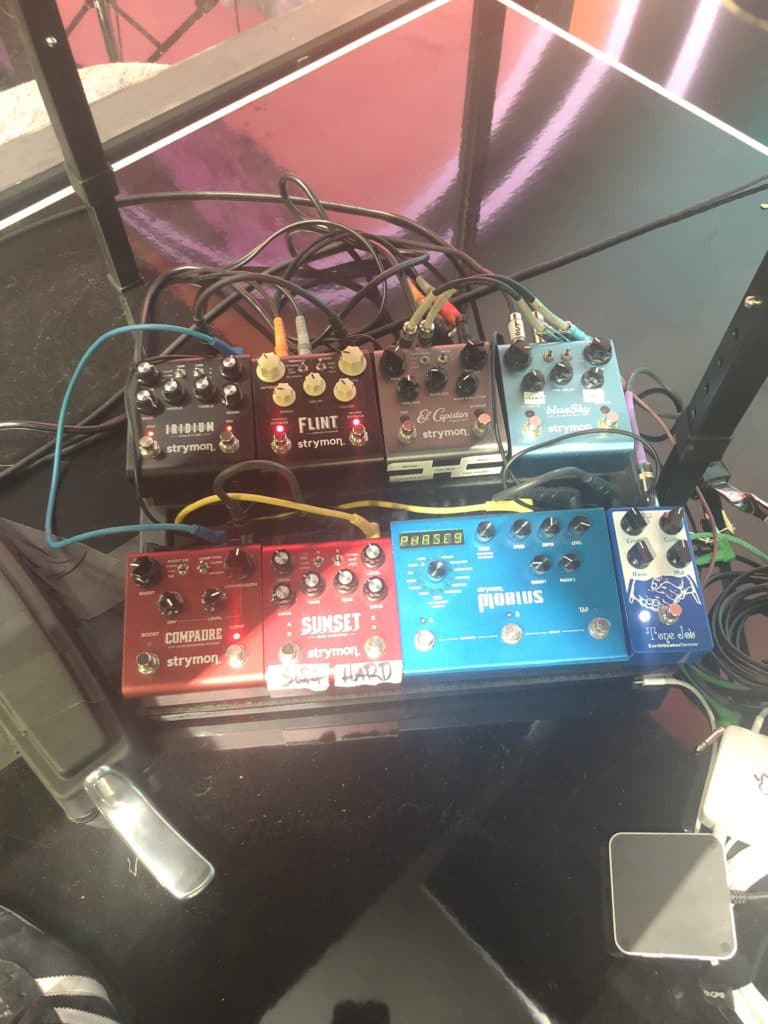
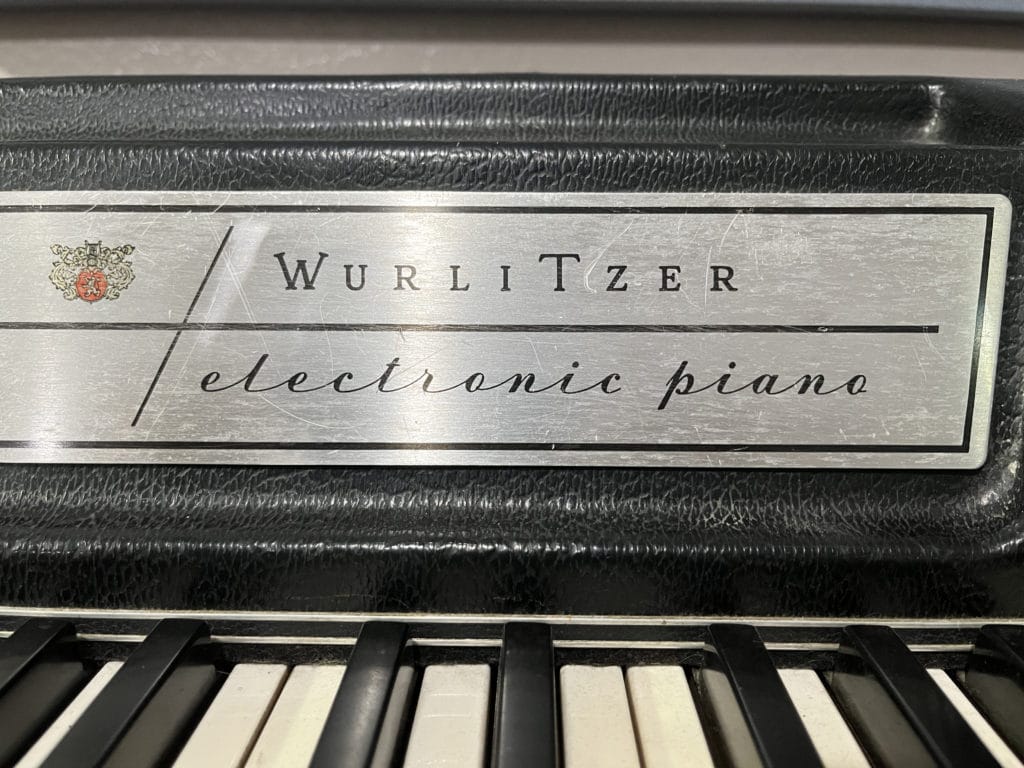
Invented by Benjamin Miessner and first manufactured in 1954, the Wurlitzer Electronic Piano is another keyboard instrument designed to feel like playing an acoustic piano, but again, with a tone all its own. Although its faceplate says “electronic piano,” it is actually an electromechanical keyboard instrument, somewhat similar to the Rhodes. Each key’s hammer strikes a metal reed that vibrates over an electrostatic pickup to create an electrical current.
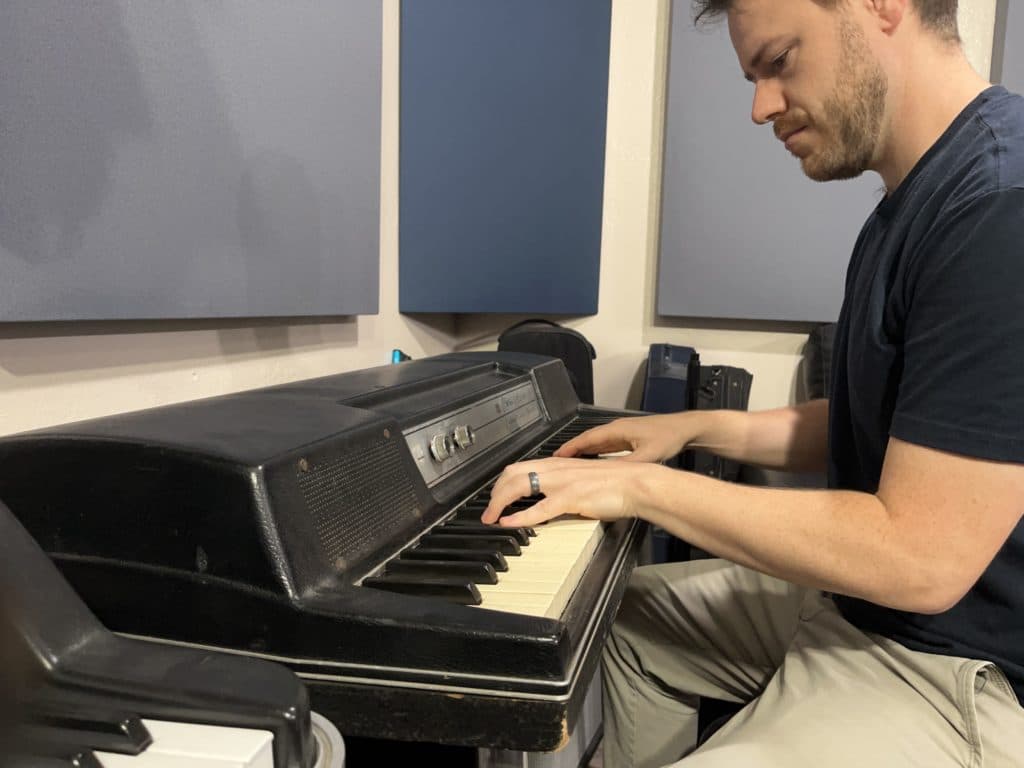
The Wurlitzer’s tone has more overtones and bite than the sound of the Rhodes, and it truly has its own unmistakable vibe. Some famous pop songs where the Wurlitzer sound is heavily featured are “The Logical Song” by Supertramp, Three Dog Night’s recording of “Mama Told Me Not to Come” (originally written by Randy Newman), and “Pretzel Logic” by Steely Dan, where the Wurlitzer is especially prominent at the beginning of the song.
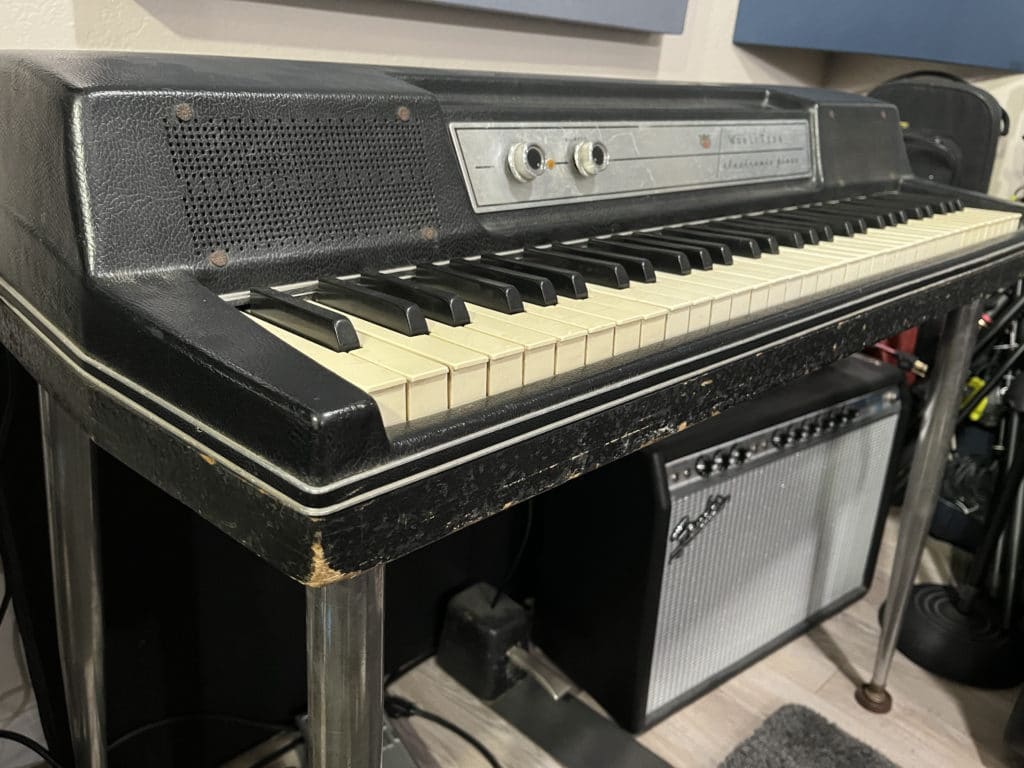
The 200A is the most popular iteration of the Wurlitzer Electronic Piano, and it’s the model that Peter plays in the video at the top of this article. Here’s what he has to say about his 200A:
The Wurlitzer was purchased off Craigslist for $700 in 2009. When vintage keyboard restoration specialist Ken Rich opened it up, he discovered pine needles all over the inside case, and also found that the preamp had some white glue/caulk amateur job holding it together. He fixed it up, and though it’s not the most pristine Wurly 200A, it is near and dear.
“Superstition” by Stevie Wonder. “Tell Me Something Good” by Rufus and Chaka Khan. “Trampled Under Foot” by Led Zeppelin. Not to mention the Herbie Hancock albums Headhunters (1973) and Thrust (1974), which also feature sublime Rhodes playing in addition to Hancock’s devastatingly funky Clavinet playing. The list goes on and on, and it is not a stretch to say that no funkier keyboard instrument has ever been unleashed on the world of popular music than the Hohner Clavinet.
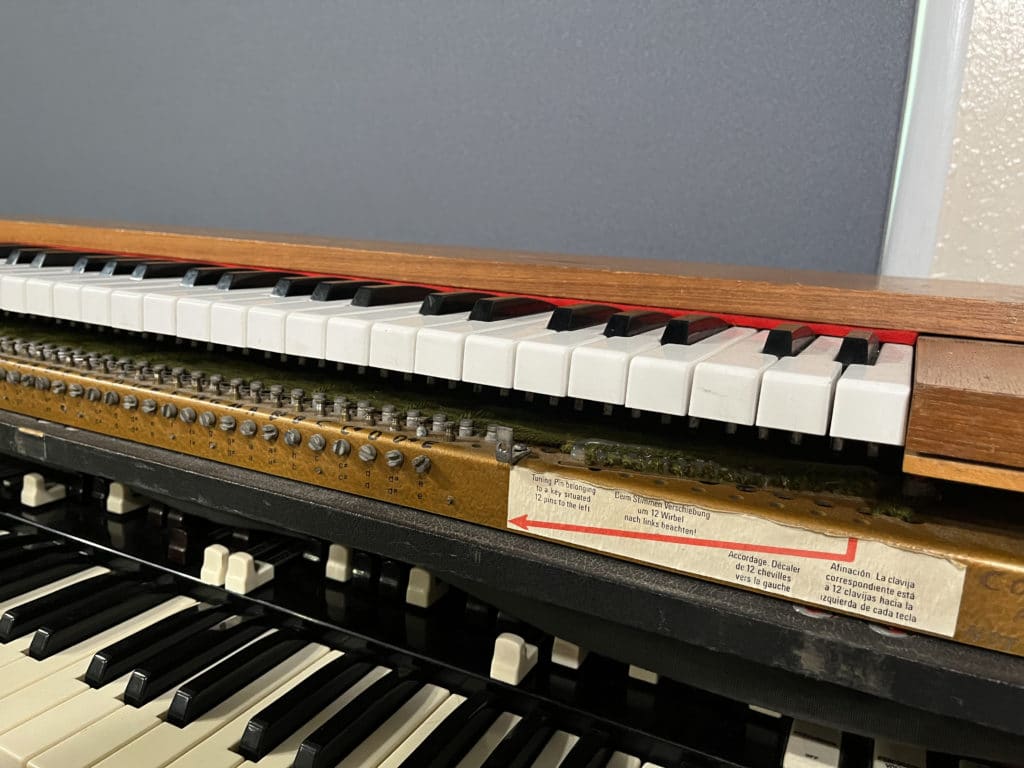
Invented by German engineer Ernst Zacharias, the Clavinet was manufactured by Hohner from 1964 to 1982. Unlike the Rhodes and the Wurlitzer which were designed with piano in mind, the Clavinet was designed to be an amplified clavichord. Like the Wurlitzer and the Rhodes, the Clavinet is also an electromechanical instrument, but instead of piano-style hammers striking metal reeds, playing a key on a Clavinet causes a rubber hammer to strike a tensioned string which vibrates over an electromagnetic pickup. In fact, the Clavinet essentially has a 60-string harp inside it, with a weave of yarn damping each string at the end farthest from the pickup.
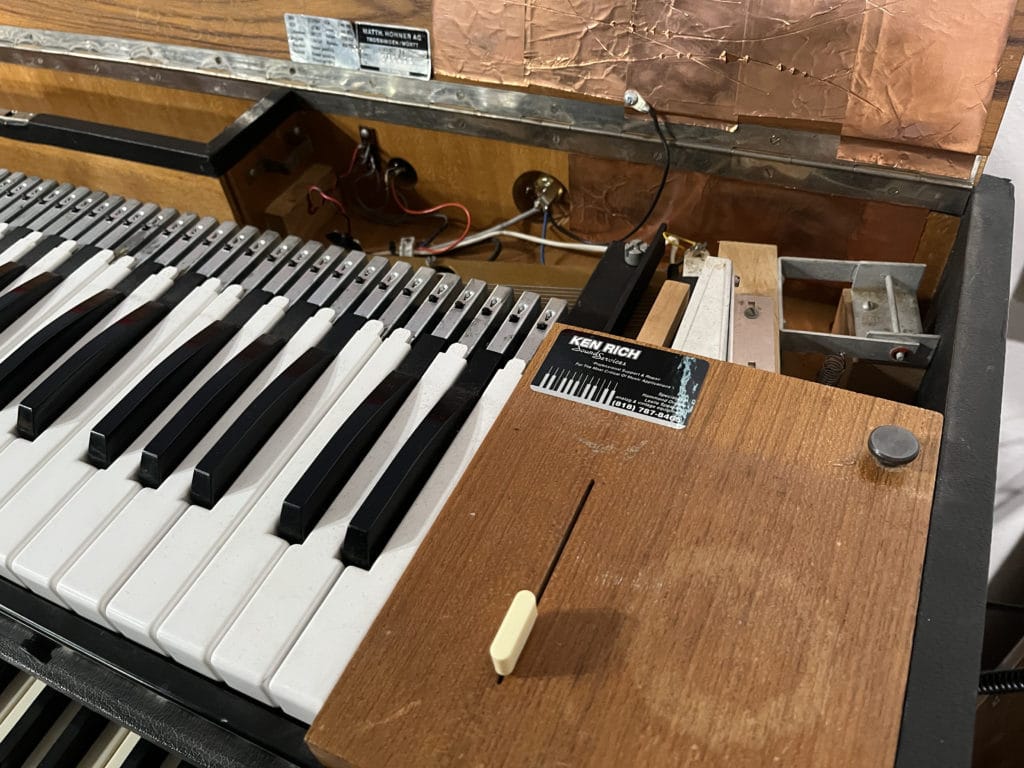
Introduced in 1971, the Clavinet D6 would become the most popular model. Peter tells us of his D6 below, which needed a bit of love at the time he acquired it.
This Clav D6 came to me as the wood case, the naked harp frame, and a literal garbage bag full of keys and hammers. All the hammer rubber from the 1970s had degraded into a kind of gooey putty. I painstakingly picked out all the goo with tweezers, bought new hammers, bent each key back into shape, upgraded the preamp, restrung it, and re-yarned it at a friend’s house during a Super Bowl hang. (Took all Super Bowl to yarn, although drinks were involved). I eventually had it teched professionally by Ken Rich, including the addition of a shielded box for the preamp which is prone to interference. It has scraped-off serial numbers and a sticker on the inside frame for an Atlanta keyboard rental company that no longer exists. Yet another tarnished vintage instrument with its best condition years behind it, but it’s my Clav and I know it well.
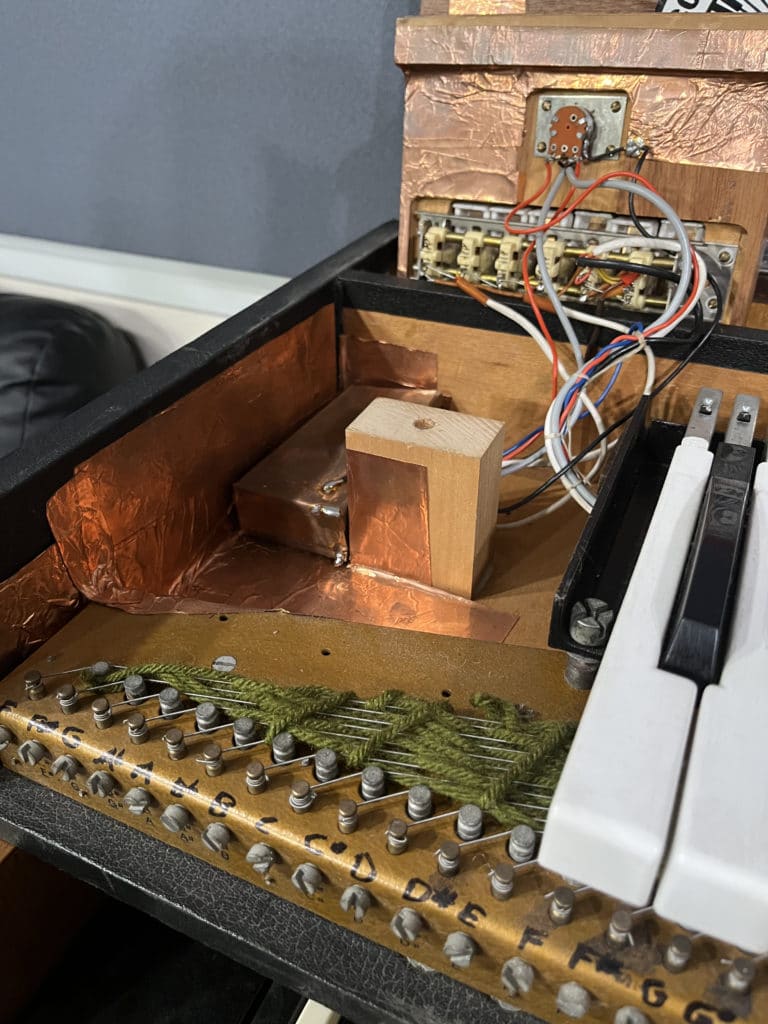
We are grateful to Peter Dyer for talking to us about his keyboards, and it was fun to dig in and learn a little more about these great vintage designs. If some of the information in this article was news to you, then next time you hear a Rhodes, Wurlitzer, or Clavinet played in some music you are listening to, we hope that knowing a little about these magical old electromechanical designs will bring an added layer to your enjoyment.
Follow Peter Dyer:
https://www.instagram.com/peterkeys88/
https://www.youtube.com/user/peterkey…
https://www.peterdyer.net/
Do you own a Rhodes, a Wurlitzer, or a Clavinet? Or another electromechanical keyboard instrument? What do you play it through? What kind of music do you play with it? Let us know in the comments below!
Subscribe to our newsletter to be the first to hear about new Strymon products, artist features, and behind the scenes content!

Here at Strymon, we work hard to deliver inspiring tones while keeping every pedal easy to use and pedalboard friendly. We also pack our pedals
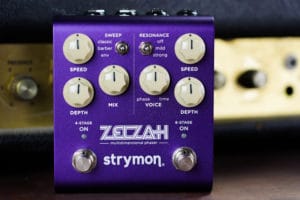
What’s your favorite phaser riff? How about your favorite flanger or chorus riff? Ever since modulation pedals started landing in music stores back in the
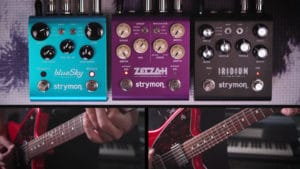
Welcome to episode two of Strymon Song Elements, where we utilize Strymon pedals to create a short song and highlight the different sounds found in
3 Responses
I’ve got a Rhodes Mark V I bought locally on Craig’s list. No legs, so I bought a regular keyboard stand and no pedal, so I bought one from Vintage Vibes. I like Peter’s heavy customized pedal better! I have two softer “E” (above middle C and two octaves above that) so I haven’t opened it up to investigate, but I’m probably going to have a find some tines. Other than that, I love it!!
Also, Peter is the only guy know other than me that seems to remember the story and the price behind each purchase. Mine was $1,000 in 2019.
I had an 88 Rhodes I GAVE away. Still have a 73 suitcase. I had a Wurlitzer teacher model with a light up sign and the student version.. mustard yellow. Sold the student, abandoned the teacher. I currently have a Yamaha CP 70 all tuned up and recently bought an A100. I use a Leslie 760 and sometimes a Leslie 825. They sound cool.